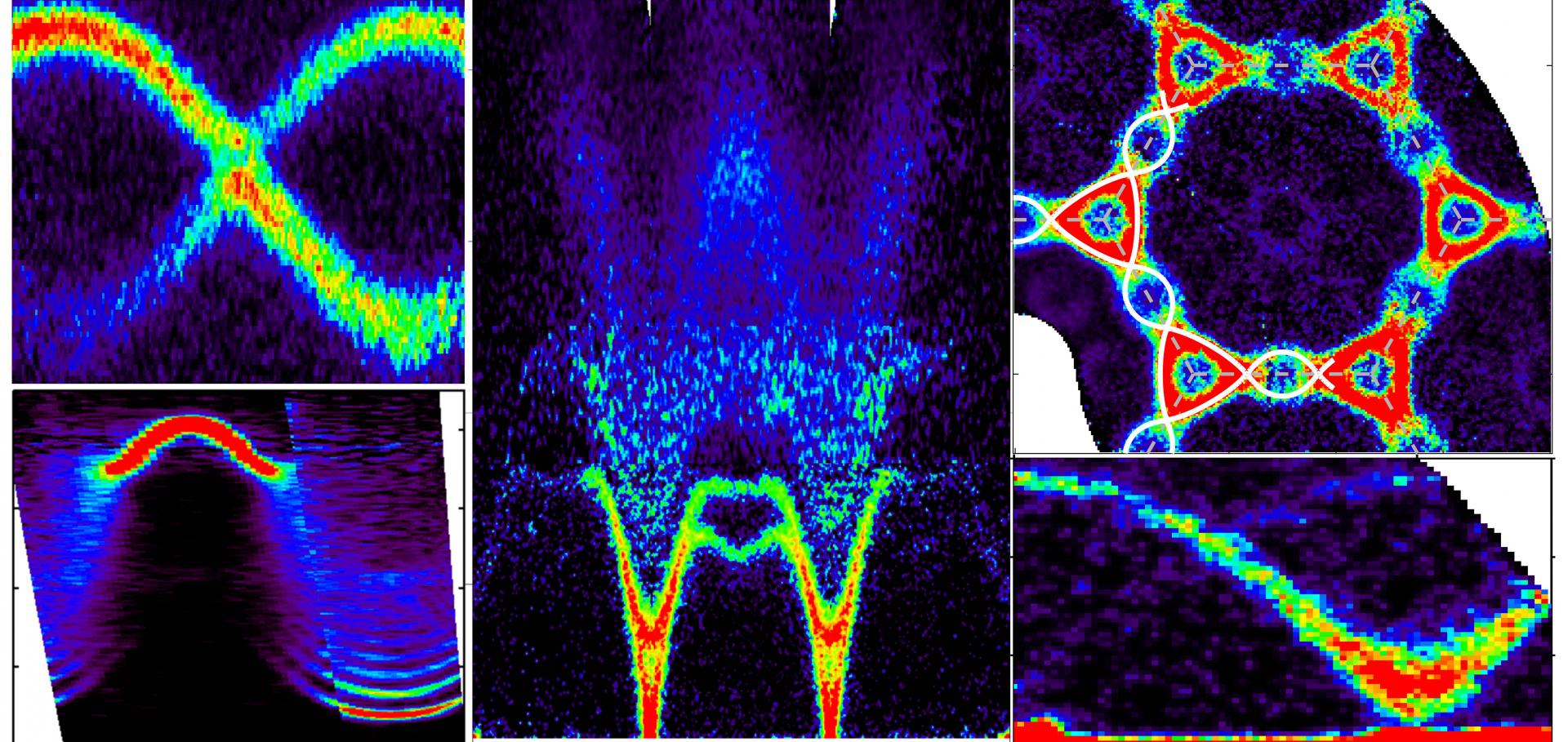Interplay between localized and itinerant d electrons in a frustrated metallic antiferromagnet, 2H-AgNiO2
ArXiv 0908.4169 (2009)
Abstract:
We report the electronic and magnetic behaviour of the frustrated triangular metallic antiferromagnet 2H-AgNiO2 in high magnetic fields (54 T) using thermodynamic and transport measurements. Here localized d electrons are arranged on an antiferromagnetic triangular lattice nested inside a honeycomb lattice with itinerant d electrons. When the magnetic field is along the easy axis we observe a cascade of field-induced transitions, attributed to the competition between easy-axis anisotropy, geometrical frustration and coupling of the localized and itinerant system. The quantum oscillations data suggest that the Fermi surface is reconstructed by the magnetic order but in high fields magnetic breakdown orbits are possible. The itinerant electrons are extremely sensitive to scattering by spin fluctuations and a significant mass enhancement (~ 3) is found.Spin dynamics of frustrated easy-axis triangular antiferromagnet 2H-AgNiO2 explored by inelastic neutron scattering
(2009)
Spin dynamics of frustrated easy-axis triangular antiferromagnet 2H-AgNiO2 explored by inelastic neutron scattering
ArXiv 0902.0676 (2009)
Abstract:
We report inelastic neutron scattering measurements of the spin dynamics in the layered hexagonal magnet 2H-AgNiO2 which has stacked triangular layers of antiferromagnetically-coupled Ni2+ spins (S=1) ordered in a collinear alternating stripe pattern. We observe a broad band of magnetic excitations above a small gap of 1.8 meV and extending up to 7.5 meV, indicating strongly dispersive excitations. The measured dispersions of the boundaries of the powder-averaged spectrum can be quantitatively explained by a linear spin-wave dispersion for triangular layers with antiferromagnetic nearest- and weak next-nearest neighbor couplings, a strong easy-axis anisotropy and additional weak inter-layer couplings. The resulting dispersion relation has global minima not at magnetic Bragg wavevectors but at symmetry-related soft points and we attribute this anomalous feature to the strong competition between the easy-axis anisotropy and the frustrated antiferromagnetic couplings. We have also calculated the quantum corrections to the dispersion relation to order 1/S in spin-wave theory by extending the work of Chubukov and Jolicoeur [Phys. Rev. B v46, 11137 (1992)] and find that the presence of easy-axis anisotropy significantly reduces the quantum renormalizations predicted for the isotropic model.Spin wave dynamics of 2d and 3d heisenberg antiferromagnets
Acta Physica Polonica A 115:1 (2009) 19-24
Abstract:
The excitations of the 2D Heisenberg antiferromagnet, Rb 2MnF4, were studied using neutron scattering techniques with the MAPS spectrometer at the ISIS facility of Rutherford Appleton Laboratory. Measurements were made of the magnetic excitations over the whole 2D Brillouin zone at 6 temperatures below the ordering temperature of 38 K and 6 temperatures above. It was found that the excitations were well defined if their wave vectors were larger than the inverse correlation length and were overdamped if the wave vectors of the excitations were smaller than the inverse correlation length. In more detail we have compared our experimental results with the results of classical simulations and the results gave a very adequate description of the experimental results except at the lowest temperature where the form of the dispersion relation was correct but the energies of the excitations were in error. Nevertheless, classical simulations do provide an effcient and easily implemented methodology for modelling the excitations in the Heisenberg magnets. The damping of the excitations was experimentally found to follow a T2 behaviour over all wave vector and energy scales. This is in agreement with the classical simulations but inconsistent with analytic theories of the damping for the 2D Heisenberg model and in particular does not agree with hydrodynamic behaviour or dynamic scaling. The result is similar to that found in 3D Heisenberg systems and suggests that more analytic theory is needed to explain the experimental results for both 2D and 3D Heisenberg magnets.Anisotropic transferred hyperfine interactions in Cs2 CuCl 4
Journal of Physics Condensed Matter 20:29 (2008)


